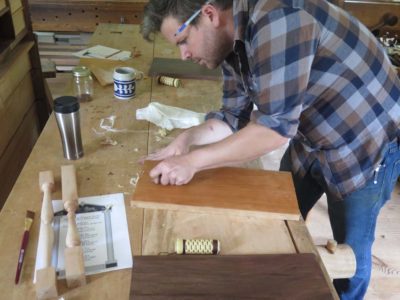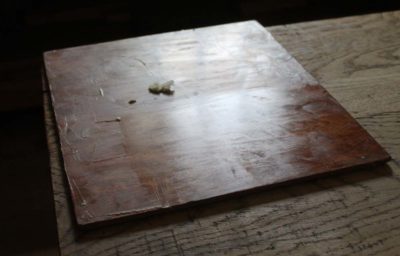Finishing Workshop @ CW – Grain Filling 1
One of the aspects of finishing that has occupied the interests of woodworkers for centuries has been the quest for executing a smooth and glossy surface. Part and parcel of that effort has been to diminish the texture of the wood itself, hence the need for grain filling. Its importance and vagaries were such that I have introduced two disparate exercises into my teaching, both of which were pretty explicitly described in the historical literature. As done by the ancients, the quest for a non-contaminating grain filler with both enough hardness and flexibility to fulfill the task led them to employ purified beeswax as the backbone for the fill material.

The first exercise was to prepare the base for spirit varnish pad polishing, sometimes known in our vernacular as “French polishing.” In this instance the objective is to flow molten beeswax onto the surface, then scrape off any excess in readying for the pad polishing. Historically they would have used a tool similar to a roofers’ soldering iron, albeit a bit more flattened at the end such that it resembles more closely something like our modern electric tacking iron.

So that is what I use. First the molten wax is drizzled onto the surface by rubbing the hot iron against the block of beeswax, followed by working the iron over the entire surface.

When the entire surface has been saturated with molten wax, the heel of the iron is used to squeegee off any excess and the piece is allowed to cool. Then using a scraper sans burr, the surface is cleaned fully down to the wood fibers. Historically this scraper would have been steel or brass, but equally viable now is a piece of plexiglass with a nicely prepared edge.

With a final buffing with a piece of coarse linen or something similar, the end result is a surface ready for the spirit varnish pad polishing to come.


Join the Conversation!